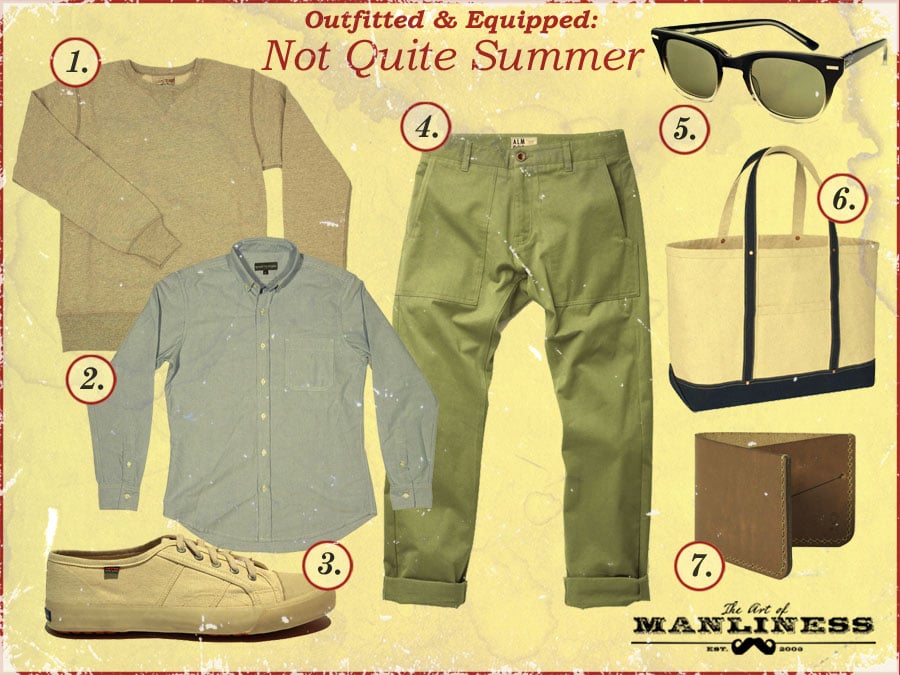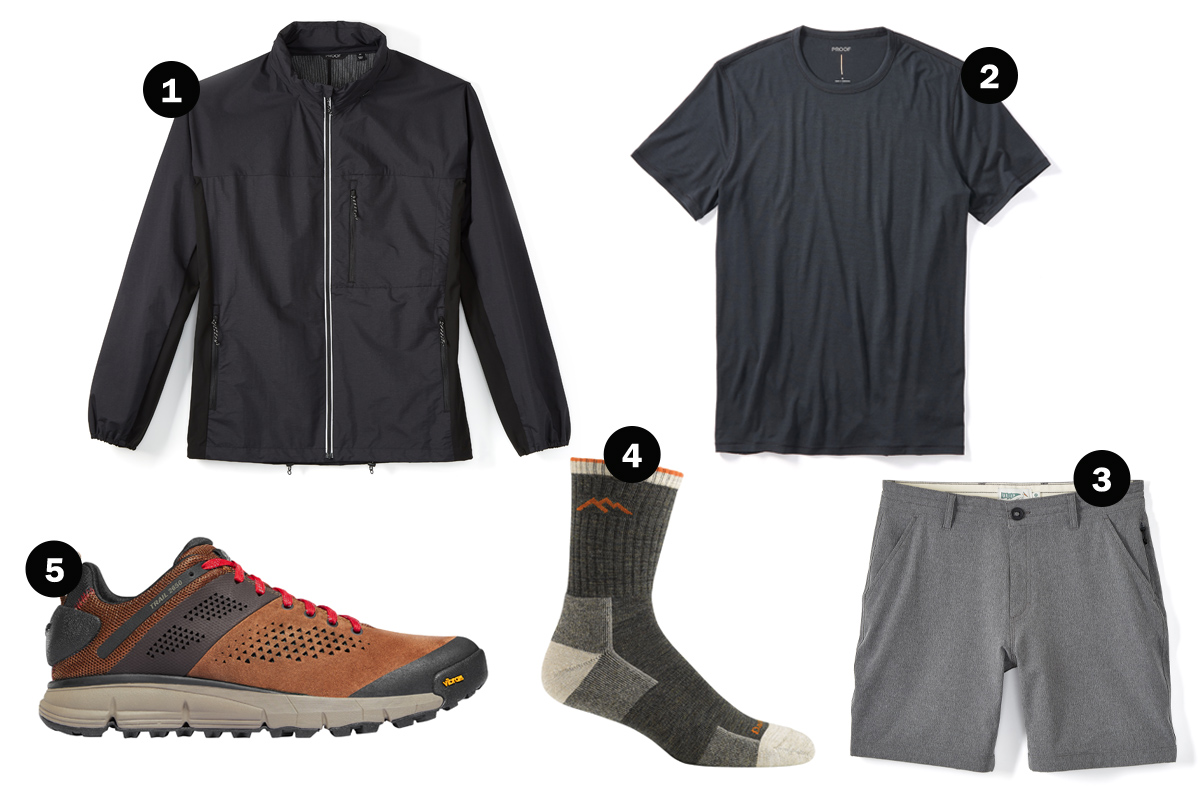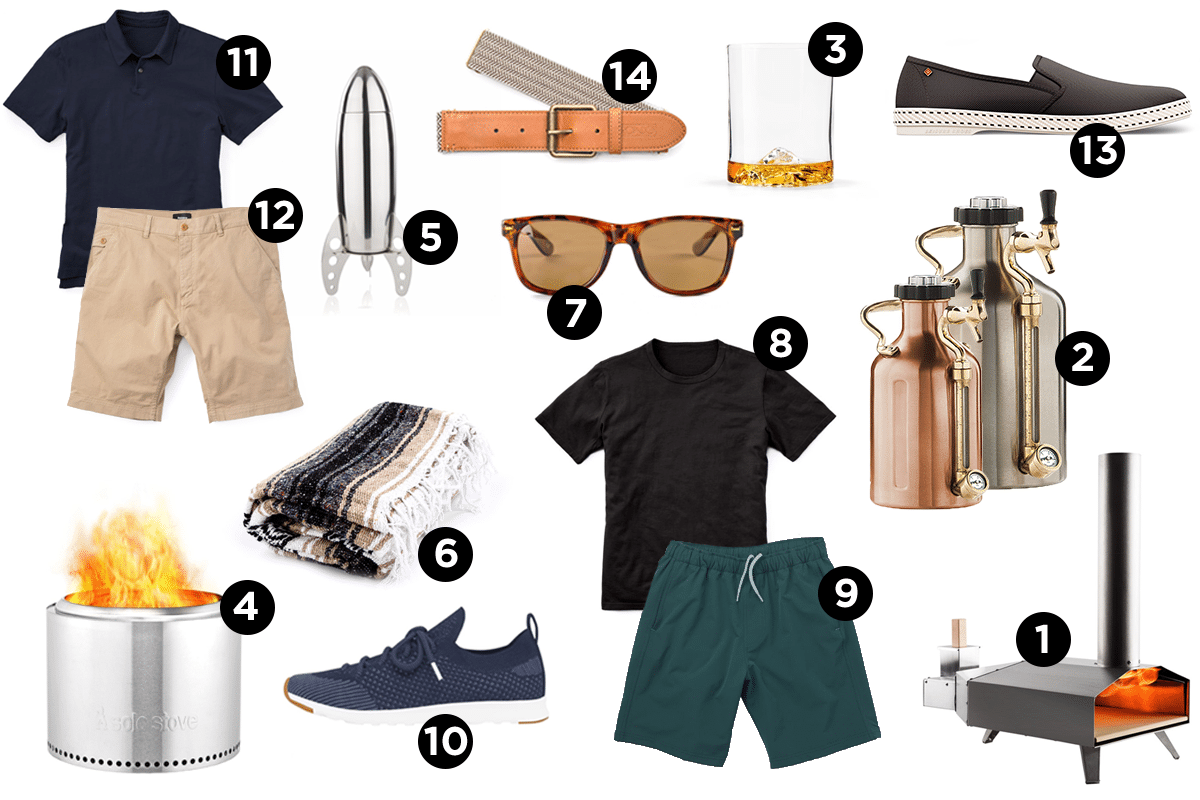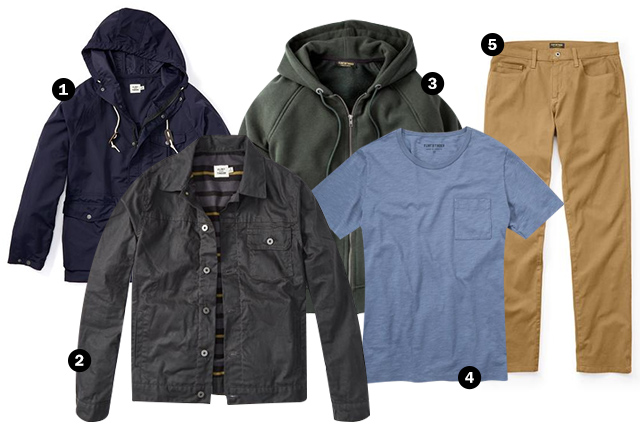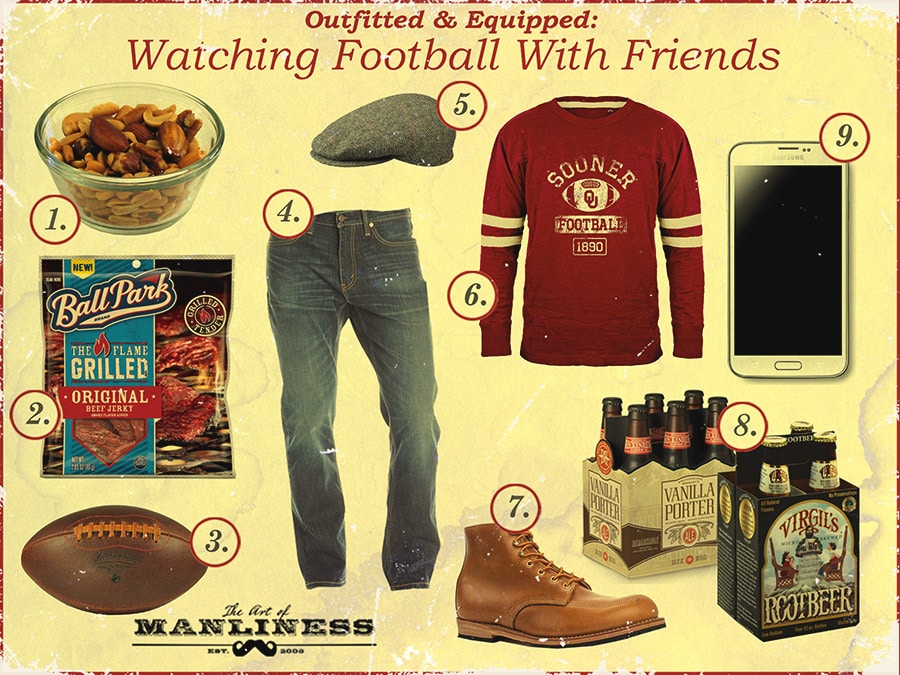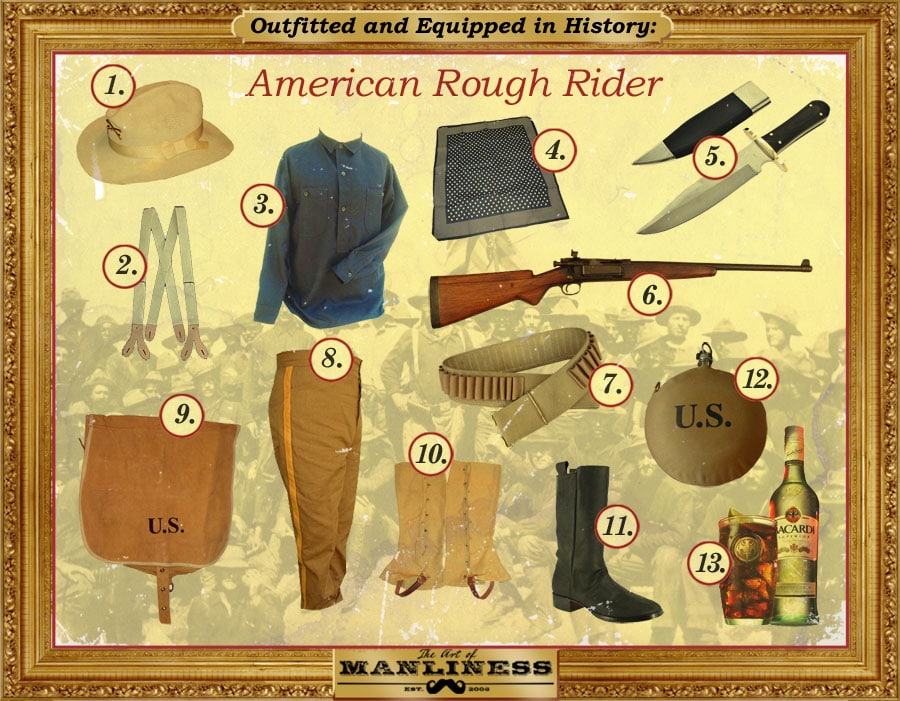
Today we’re doing something different from our usual Outfitted & Equipped series. Instead of showcasing what a modern man might bring and carry in a certain situation, we’ll take a look at how a figure from history would have done so: the American Rough Rider.
The Rough Riders. It’s one of the most revered names in American military history, and associated with our most virile president. And yet, many men don’t really know what they accomplished, who they were, or that they were even a military unit of the Spanish-American War of 1898.
At the time, the Spanish had occupied Cuba for many hundreds of years. Revolts against Spanish rule had begun to pick up in the latter half of the 19th century, and Americans eventually joined in the protest against Spain. War was formally declared to assist with the Cuban independence effort after the mysterious sinking of the Maine and after Spain refused to withdraw from the island.
These men were technically known as the 1st United States Volunteer Cavalry. The U.S. Army was still depleted from the Civil War 30 years earlier, so President Williams McKinley called upon volunteers to assist the war effort. This group of college athletes, ranchers, and cowboys were led by Theodore Roosevelt. At the time, he was Assistant Secretary of the Navy, but resigned his position so he could lead a group of men, his Rough Riders, into battle. Although they were a cavalry unit, they actually ended up fighting on foot as infantrymen. There was general chaos and disorganization in Tampa as they were about to embark to Cuba, and due to a lack of storage on the ships allotted for the journey, the horses (and some men, as well) had to be left behind. And thus they fought on foot, except for TR who was able to get a single horse onto shore in Cuba. There are many great stories of the Rough Riders that cannot be covered here, the most famous being the taking of San Juan Hill. Do yourself a favor and read up on it. Let’s take a look at how one of these men would have been outfitted and equipped for battle.
1. The Hat. Slouch Hat. This style of hat was a fixture of the U.S. military since the Civil War. It’s a wide-brimmed hat, with one side often pinned up, allowing for a rifle to be slung over the shoulder. The slouch hat is more famously associated with the Australian military, but was a common fixture, especially among U.S. Westerners, in the latter half of the 19th century.
2. The Suspenders. White Canvas Suspenders. Suspenders were still standard military wares 115 years ago. These had leather button clasps and were buckle adjustable instead of being elastic.
3. The Shirt. Dark Blue Flannel. This shirt was worn by all members of the Army in the Span-Am War. In different situations there would also be a coat over it, but the warm weather kept men from using it. This is a 3-button pullover shirt with a fold-down collar.
4. The Symbol. Blue Polka Dot Bandana. First carried by TR, a blue handkerchief with white polka dots became an unofficial symbol of the Rough Riders. It was worn loosely around the neck and provided some protection from the sun and dust.
5. The Knife. Bowie Hunter Knife. Each Rough Rider was issued a Bowie knife in addition to their rifle. The Bowie is a classic fixed-blade knife. The style has become quite varied, but today it generally means a sheathed knife with a crossguard and a clipped point, meaning the end looks like part of it has been shaved off.
6. The Gun. Krag Jorgensen M1896 Carbine. While most Rough Riders carried their own firearms (often revolvers), they were also issued this rifle. These are the same rifles that were issued to US Army cavalry units, even though the Rough Riders did end up doing their fighting on foot.
7. The Belt. Mills Cartridge Belt. This came in either tan or blue. The fellas would sit around before setting out and fill their belts from boxes of ammo. There were both single-row and double-row belts, with the double-row versions having just what it says: a second row of cartridge holders. You’d get between 30-50 rounds in a belt like this.
8. The Pants. M1898 Khaki Trousers. This khaki trouser differed from the Army infantrymen who wore sky blue pants. These pants had a watch pocket, another rear hip pocket, and buttons for suspenders. The yellow stripe down the pant was the traditional color of the cavalry.
9. The Bag. Haversack. This canvas bag used just a single strap, making it an ancestor of today’s common messenger bag. In it would be a mess kit, food (such as hardtack), extra ammo, and any personal items.
10. The Leggings. Brown or Tan Canvas Leggings. You may think leggings are a ladies garment, but that’s not the case. Their original purpose was incredibly practical for both cavalrymen and for the boots on the ground. Leggings would protect from chafing and wear and tear on pants for men on horses. For the infantry, it would provide some protection to the lower leg, prevent sand, dirt, etc. from entering the boots, and also give a measure of ankle support.
11. The Boots. Black Leather Low-Heel Boot. This style campaign boot was used for an extraordinarily long time in the military. The style became popular in the early 1800s with miners, ranchers, etc., but came to be the footwear star of the Civil War. It continued to be in use through the early 1900s. It was a high boot, and wide enough for the trousers to be tucked into them.
12. The Water Supply. Army-issued Canteen. This particular version was covered in a khaki canvas and had a large strap so it could simply be slung around the back and out of the way. It had a large “U.S.” printed on the front, and was sealed with a cork stopper that had a chain attached to keep from being lost.
13. The Refreshment. Cuba Libre. Whether carried in a flask in the field or sipped on from a bar in Old Havana, the Rough Riders wet their whistle with Cuba’s abundant unofficial spirit: Bacardi rum. Emilio Bacardi, whose father founded the famous rum manufacturer in 1862, used his position as the company’s president and his reputation as a respectable businessman as a cover for his support of the rebel guerilla army. Bacardi funneled resources to those who fought for Cuban independence, including keeping them supplied with his famous rum. Legend has it that an American soldier took that rum and invented the famous Cuba Libre cocktail – a refreshing mix of rum, cola, and lime. Sitting in a bar in Old Havana, a toast with the new drink was proposed to celebrate victory over the Spanish. Glasses were lifted to shouts of — “Por Cuba Libre!” – the battle cry of the war, and the name stuck.


